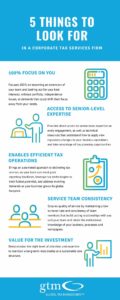Location Planning for R&D Tax Incentives
Multinational enterprises understand that implementing a tax efficient global intangible property (IP) strategy can be beneficial on many levels. When structured properly, the payoff can be well worth the investment. Benefits of a tax efficient IP strategy may include, for example, annual cash tax savings, a reduced global effective tax rate, and a higher enterprise value for exit planning purposes. However, IP planning should not be undertaken lightly, with myriad tax and non-tax factors to consider.
While taxpayers almost universally consider income tax implications and model the relative tax rate differentials among various possible IP holding jurisdictions, often through a transfer pricing study, they sometimes overlook a key consideration: the availability of research and development (R&D) tax incentives. Incentives may be significant enough to influence the ultimate jurisdiction chosen for IP ownership and R&D activities.
R&D Tax Incentive Considerations
There is a natural interplay between transfer pricing strategy and R&D tax incentives. Simply put, where there’s transfer pricing there’s usually IP, where there’s IP there’s usually R&D, and where there’s R&D there are likely R&D tax incentives.
From an R&D tax incentives perspective, there are several factors that come into play when choosing where to deploy R&D teams. They include:
- The magnitude of R&D tax incentives in the jurisdictions under consideration;
- Whether or not IP must remain in the jurisdiction to claim incentives; and
- Whether all R&D has to take place in the jurisdiction.
More than 40 countries offer R&D tax incentives. While the recognition of what qualifies as R&D is similar in most jurisdictions, the tax treatment can be very different. The differences include:
- Volume-based or incremental;
- Credit, deduction, or both;
- Refundable, carryforward, or “use it or lose it”; and
- What can be included (e.g., capital equipment, overhead expenditures, software development).
The above factors must be balanced with the facts on the ground. Where are the corporate facilities located? Where are the most and best qualified research professionals? Where are budget and project decisions actually made? Where is the current and future customer base? What are the corporate laws in the jurisdiction being considered? All else equal, though, some jurisdictions are far more generous than others when it comes to R&D tax incentives.
Example: R&D Tax Incentives, IP, and Transfer Pricing
As previously mentioned, when deciding among jurisdictions, taxpayers may neglect to consider R&D tax incentives and conclude primarily based on tax rate arbitrage, that migrating IP and R&D activities to jurisdiction A provides greater tax savings than in jurisdiction B. After layering in R&D tax incentives, however, jurisdiction B may actually prove to be the more favorable location.
Let’s look at the following example to see how impactful R&D tax incentives can be in the decision-making process for locating IP and R&D, using two G7 countries to demonstrate. The purpose of this example is to illustrate the tax results of placing R&D and the resulting IP in different jurisdictions based on available R&D incentives. Accordingly, it does not include other tax considerations that may exist, such as GILTI and FDII.
|
USA |
France |
|
|
Revenue |
500,000 |
500,000 |
|
Costs |
350,000 |
350,000 |
|
R&D Credit Eligible Costs |
200,000 |
200,000 |
|
Profit Before Tax |
150,000 |
150,000 |
|
Federal Tax Rate |
21.0% |
28.0% |
|
Taxes |
31,500 |
42,000 |
|
R&D Credits |
10% |
30% |
|
Net R&D Credits |
15,800 |
60,000 |
|
Total Tax |
$15,700.00 |
$(18,000.00) |
While a 21% corporate tax rate on its face looks far more attractive than a 28% tax rate, once R&D credits come into play, the picture changes. In this example, although the corporate tax rate is significantly lower in the United States, because the R&D credit rate in France is higher, the overall taxes owed is significantly lower in France. In addition, in France the credit is not taxed as income, and is refundable after three years; therefore, not only are taxes eliminated, the taxpayer would actually receive a cash refund greater than the amount of that would have been owed in the United States.
Of course, other factors, such as a larger customer market, a larger pool of skilled workers, and a multitude of technology centers could – and many times does – outweigh the tax advantages on paper. Due diligence and detailed analyses are highly recommended when undertaking such a planning project.
Contact us at kcroy@gtmtax.com and jforman@gtmtax.com if a conversation about R&D considerations for international tax and transfer pricing planning would make sense. We can help you quickly assess your best approaches for maximizing value.



